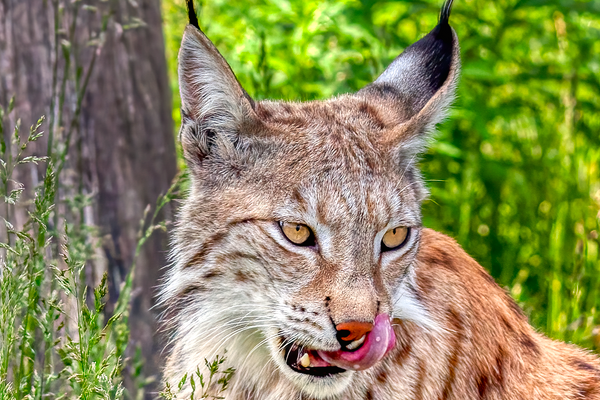Why the U.S. Capitol’s ‘Demon Cat’ Legend Is So Persistent
A lot of it has to do with paw prints.

Over the last two centuries, the U.S. Capitol Building, with its underground passages and echoing side chambers, has amassed its fair share of ghost stories. Whether it’s the specter of a lost Civil War soldier from the building’s brief stint as a wartime hospital, or the ghost of John Quincy Adams shouting his final words in the Speaker’s Lobby, the Capitol Building is a ghost hunter’s dream. But few such stories have captured the public’s imagination like that of the Demon Cat.
“It’s probably the most common of all the ghost stories in the capitol. Partly because of the physical evidence,” says Steve Livengood, the chief tour guide of the U.S. Capitol Historical Society.
Tales of a spectral feline known as the “Demon Cat” (initials “D.C.,” get it?!) date back to at least the 19th century. Since joining the USCHS in 1973, Livengood has become an expert on the tale.

“The story probably goes back to the post–Civil War era. The main thing is that the people who would see it particularly were the night watchmen,” says Livengood. The most common version of the legend goes that a guard was on patrol one night when he saw a black cat approaching. In those days, cats were not an uncommon sight in the building, introduced to control the rodent population. However as the cat came closer, it grew in size until it was as large as a tiger. The monster cat pounced on the guard, who fell down and tried to protect himself, but the creature vanished in mid-air.
Like most ghost stories, tales of the Demon Cat have a number of variations. Later sightings are said to have scared people to death. The cat’s appearances have also been linked to national tragedies and presidential transitions.
What’s kept the legend alive all this time? A couple of features in the Capitol Building are said to be evidence of the Demon Cat’s existence. The most famous of these is a group of shallow paw prints in the concrete of the Small Senate Rotunda. In 1898, the Capitol Building was damaged by a gas explosion, and according to Livengood, in some spots the original stone was replaced by concrete. “It’s quite possible that a cat walked across the wet concrete,” he says. “Just enough to leave some impressions. It’s as you come out of the Old Supreme Court Chamber. There may be six or eight pretty clear ones.” In another part of the building, Livengood also notes that the letters “DC” have been scratched into the concrete. “Everyone says, ‘That’s the Demon Cat putting its initials there!’”

As much fun as it is to believe that there’s a monster cat prowling the midnight halls of the U.S. Capitol, Livengood isn’t having it. “I can put enough pieces together to know where the legend came from,” he says. “The night watchmen were not professionals. They would often be some senator’s ne’er-do-well brother-in-law that had a drinking problem.”
Livengood’s theory is these early Capitol guards would often get so drunk they’d fall down, so when one of the building’s cats came and licked their face, they assumed it must have been monster-sized. But when the guard in question reported their ravings to a superior, the boss couldn’t really discipline him for drinking because of his high-powered connections, so the guard would simply have been sent home to recover. “Then the other guards realize that if they see the cat and get attacked, then they get a day off. And that’s how history gets written,” says Livengood.
Livengood says that while he regularly gets asked about the Demon Cat, or sees visitors using their cell phones to illuminate the faint paw prints in the Small Senate Rotunda, he’s never heard of a modern sighting of the creature. “I’ve never had anyone who felt they had an experience like that,” he says.
Still, Livengood sees ghost stories as an important part of the building’s history. “They humanize the building,” he says. “One of the things I try to get across to people as I’m giving a tour is that the spirit of the people who built the building and the people who have acted out history in it are still there. And you can feel it.”
















Follow us on Twitter to get the latest on the world's hidden wonders.
Like us on Facebook to get the latest on the world's hidden wonders.
Follow us on Twitter Like us on Facebook